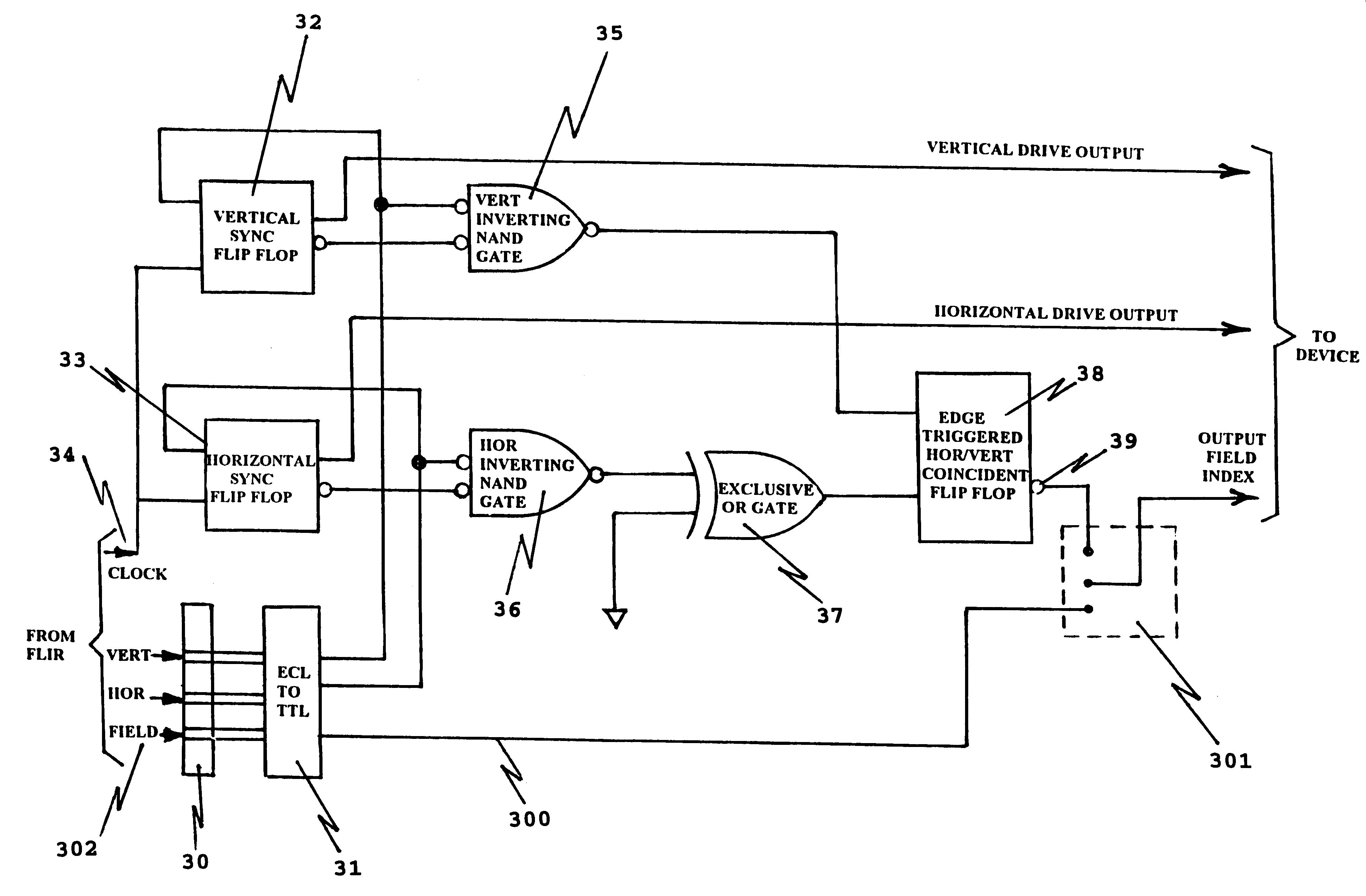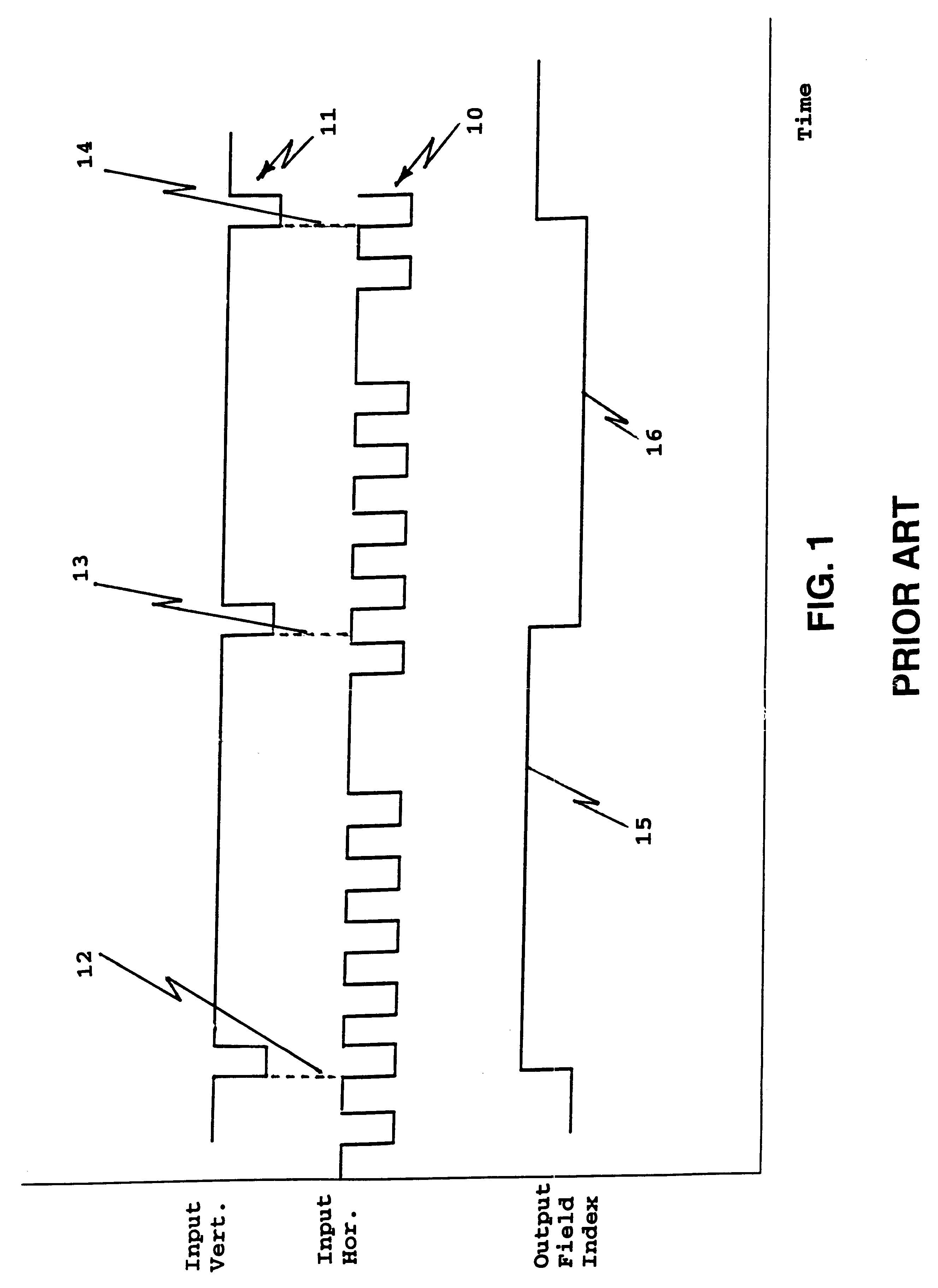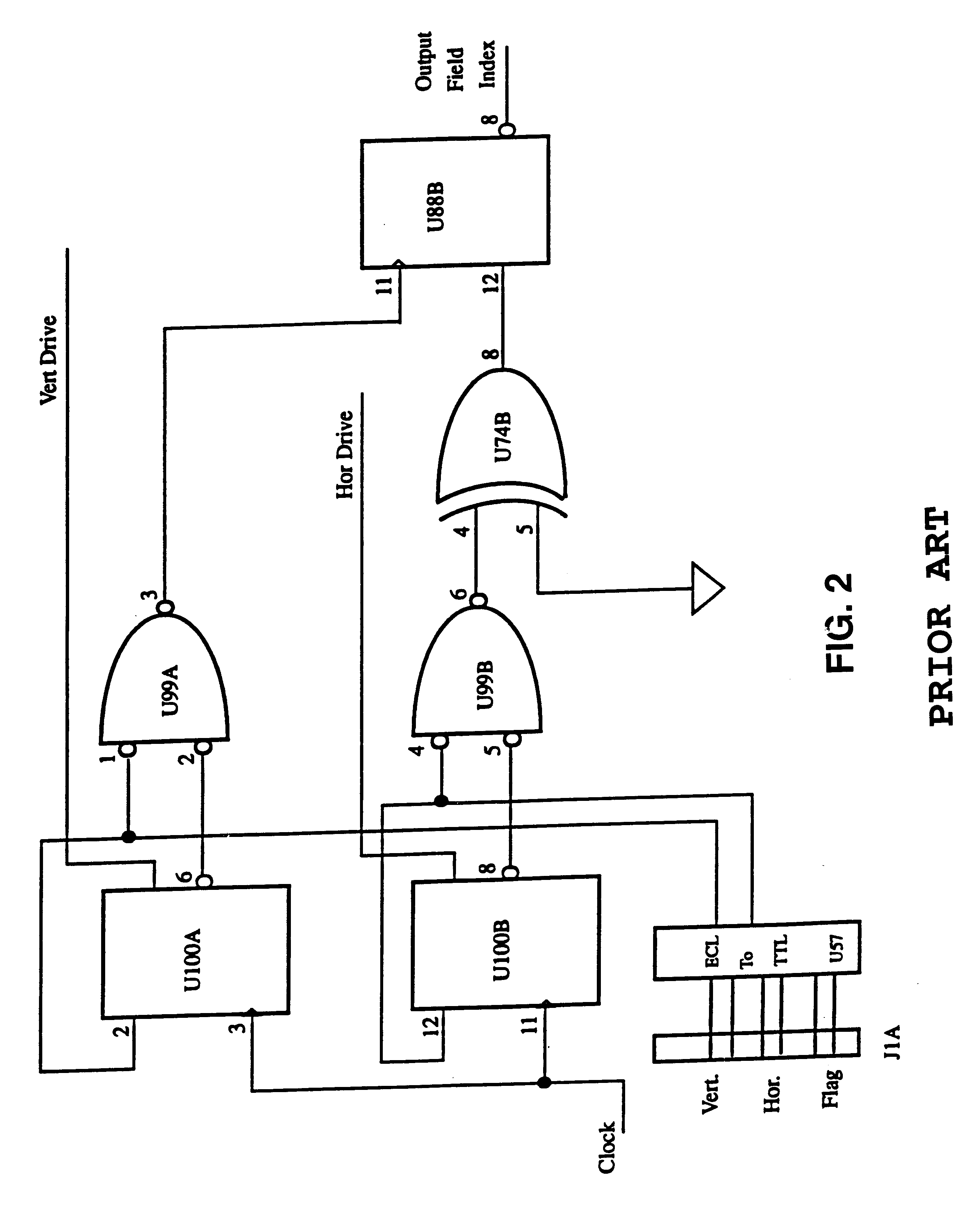Field synchronization system and technique
a field synchronization and field technology, applied in the field of field synchronization system and technique, can solve the problem that no specific apparatus has been established
- Summary
- Abstract
- Description
- Claims
- Application Information
AI Technical Summary
Problems solved by technology
Method used
Image
Examples
Embodiment Construction
A prior art technical standard by the Society of Motion Picture and Television Engineers (SMPTE) is recognized as a standard for timing protocol which is utilized in the prior art field detect circuits. The SMPTE standard 244M digital timing protocol utilizes a TTL voltage level vertical synchronization signal operating at a 60 Hz interval rate to indicate the start of each field of 30 Hz rate digital data. Normal timing protocol dictates that the raising edge of a vertical sync occur every 1 / 60 sec (60 Hz) to indicate the start of a new field. At the time the raising edge of the vertical sync pulse occurs, the 30 Hz signal of the field sync goes high and remains high for a period of 1 / 60 of a second during which time the data being transferred is defined as field one. 1 / 60 of a second after the raising edge of the field sync has occurred the signal goes low. While the field sync is low the data that is transferred belongs in field two. The horizontal pulse indicate the start of a n...
PUM
 Login to View More
Login to View More Abstract
Description
Claims
Application Information
 Login to View More
Login to View More - R&D
- Intellectual Property
- Life Sciences
- Materials
- Tech Scout
- Unparalleled Data Quality
- Higher Quality Content
- 60% Fewer Hallucinations
Browse by: Latest US Patents, China's latest patents, Technical Efficacy Thesaurus, Application Domain, Technology Topic, Popular Technical Reports.
© 2025 PatSnap. All rights reserved.Legal|Privacy policy|Modern Slavery Act Transparency Statement|Sitemap|About US| Contact US: help@patsnap.com



